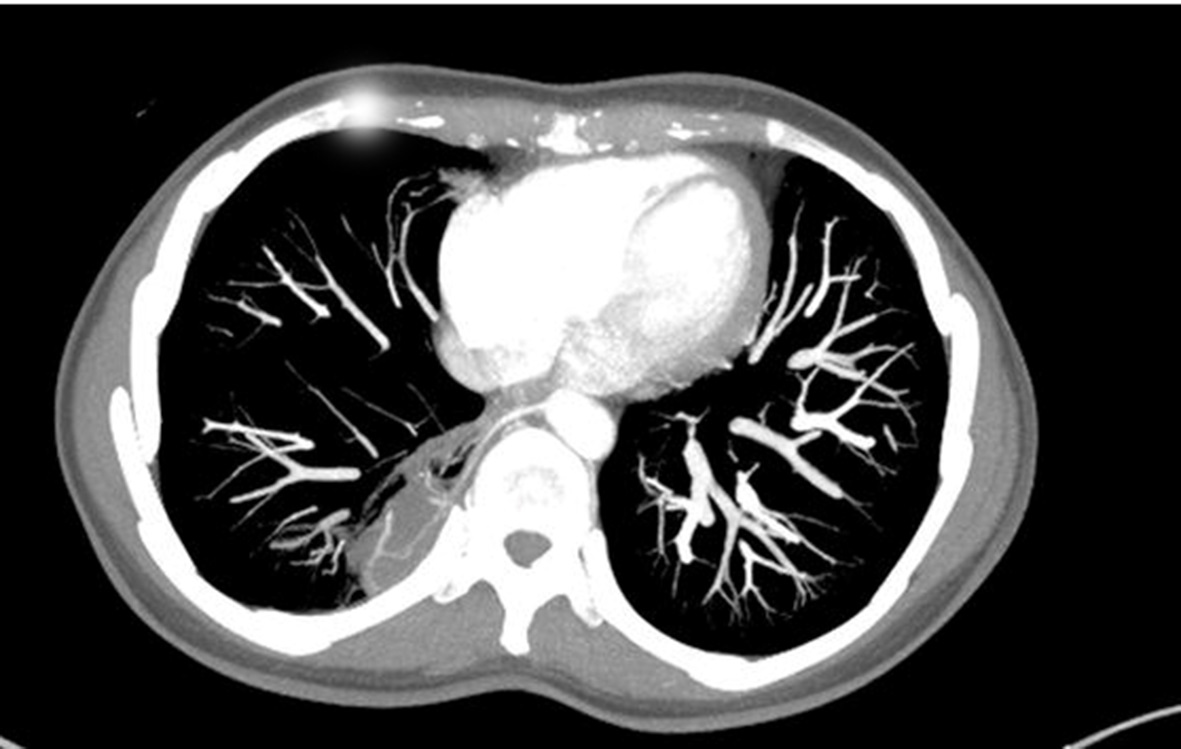Abstract
Pulmonary sequestration is a congenital anomaly defined as a nonfunctioning mass of lung parenchyma. Presence of an independent pleural envelope classifies it as intralobar, accounting for approximately 75% of the cases, while absence classifies cases as extralobar, accounting for the remaining 25%. Diagnosis is made through radiography and confirmed by computed tomography, magnetic resonance, or angiography. The traditional treatment is open surgical repair, but endovascular techniques have been used, with good results. We report the case of a 29-year-old-woman presenting with recurrent pneumonia for 5 years. A CT scan of the chest revealed poor vascular formation in the lower region of the right lung. The pulmonary sequestration was treated by embolization of the anomalous branch.
Keywords:
pulmonary sequestration; therapeutic embolization; pulmonary circulation; endovascular procedures

 Thumbnail
Thumbnail
 Thumbnail
Thumbnail
 Thumbnail
Thumbnail
 Thumbnail
Thumbnail
 Thumbnail
Thumbnail




